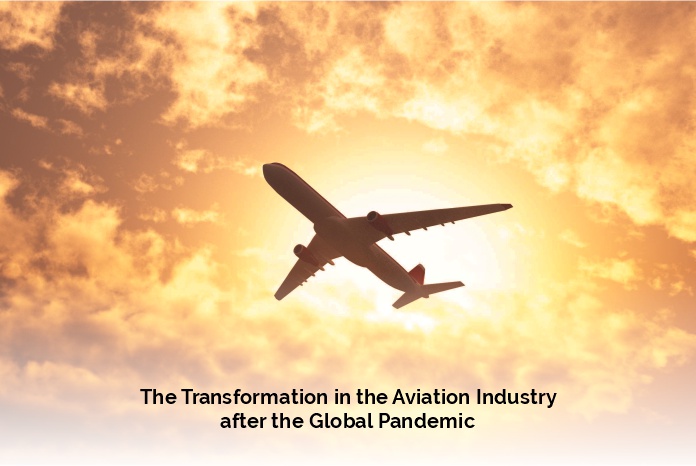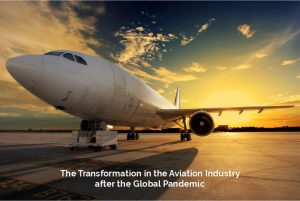The Necessity of Modern Upgrades in Aviation Sector for Greener Air Travel
Top 05 Most Promising Aviation Service providers, 2022

Aviation is a naturally inventive sector. Even with the
devastating effects of the COVID-19 epidemic, green technology in aviation is
being researched at a higher rate than ever before. Various types of
sustainable aviation fuels are now available for use in airplanes, and new
aircraft technology and operating methods are being developed to reduce CO2.
At different altitudes, aviation has distinct effects on the
Earth’s atmosphere. NOx and halogens affect the ozone layer at the highest
level in the stratosphere; NOx, CO2, H2O, and particulates affect climate
change in the troposphere; and NOx, O2, and particulates affect local air
quality, as well as noise pollution from aircraft entering or departing from
airport terminals and at ground level.
The Concerning Environmental Challenges
Climate change continues to be a major concern to aviation,
and all stakeholders in the industry recognize and understand the need for
quick action. The sector is concerned about ‘flight shame,’ the enforcement of
environmental-related taxes and regulations, and the rising attention of
investors on Environment, Social, and Governance (ESG). While aviation accounts
for only 2.5 percent of global CO2 emissions (much less than the public’s
perception), its route to lowering its carbon footprint is less evident than
that of other industries. The net-zero aim for 2050 is quite ambitious, and
achieving it will be a significant challenge for the industry.
Fleet renewal, operational efficiency improvements,
technical innovation, sustainable aviation fuels (SAF), and, in the short term,
carbon offsetting are all components of lowering emissions. Some of these
technical elements, such as hydrogen or electric-powered aircraft, are still a
long way off from having a significant influence. Sustainable aviation fuel
(SAF) is widely agreed to be the immediate priority, with IATA predicting that
it would be the key driver of emission reductions over the next decade and
beyond. However, the present levels of SAF availability and its current price,
which is more than three times that of jet fuel, pose significant hurdles. Governments
must play an active role in driving the demand for SAF by providing incentives
to attract more manufacturers and investors to the field.
The International Civil Aviation Organization (ICAO)
launched CORSIA (Carbon Offsetting and Reduction Scheme for International
Aviation) to combat global warming, with the goal of halving CO2 emissions from
2005 levels by 2050. Other programs exist, such as the Air Transport Action
Group (ATAG) waypoint initiative, which aims to cut CO2 emissions in half by
2050, while the European Commission Green Deal mandates that Europe be carbon
neutral by 2050.
Small Steps for Big Change
By the year 2050, the aviation sector has set a self-imposed
aim of reaching net zero carbon emissions. Green technologies in the industry
have begun to emerge as a result of this ambitious goal. Sustainable aviation
fuel is one such technique (SAF). The popularization of SAFs, out of all the
technologies that might potentially bring the aviation industry closer to its
environmental targets, shows the most promise in terms of impact and efficacy.
- Limiting Contrails
Aviation produces water vapor, aerosols, and nitrogen oxides
in addition to carbon dioxide. Because these pollutants absorb more energy than
is emitted out to space, the Earth’s atmosphere warms. As a result, aviation’s
contribution to global warming may be considerably greater than its carbon footprint.
Condensation trails, are the line-shaped clouds that emerge
from a plane’s engine exhaust. They are the worst of the non-carbon
consequences. The majority of contrails are caused by a limited number of
planes. This is due to the fact that contrails only form in narrow atmospheric
bands where the weather is sufficiently cold and humid.
Avoiding those zones might make a major impact in reducing
non-carbon emissions from aircraft. According to a study that modeled Japan’s
airspace, changing a small number of flight paths to avoid certain locations
might reduce contrail impacts on the environment by 59%. The elevation
difference between these places might be as minor as 2,000 feet. While flying a
plane higher or lower might degrade efficiency and increase jet fuel
consumption, the study revealed that minimizing contrails would still balance
any increased carbon emissions.
Inventing Fuel Alternatives
Commercial jets utilize kerosene-based propellants, but
firms are experimenting with converting biomasses into jet fuels, such as
vegetable oil and even used diapers. According to some studies, these biofuels
might reduce carbon emissions from airplanes by up to 60%. However, not all
biofuels are made equal.
Because of the planet’s rising population, which requires
crops for calories, those that might be converted into food are unsustainable.
Used cooking oil and pulp from agriculture or logging are both costly and not
generated in high enough quantities to make a significant impact. However, this
does not exclude out the development of other environmentally friendly aircraft
fuels.
- Going Hybrid
Electric vehicles aren’t the only mode of transportation
being developed: according to one estimate, there are over a hundred
electric-powered aircraft projects in the works. From powered gliders to light
aircraft and small electric vertical take-off and landing (eVTOL) personal air
vehicles and air taxis, the potential of electric aircraft has grown, and the
concept is now being actively considered for larger regional aircraft powered
by electric engines or multiple transmission and distribution systems.
In recent years, aircraft propulsion systems have undergone
a revolution, with hybrid-electric and battery-powered electric aircraft
increasingly proving to be a cost-effective alternative to traditional
platforms — at least for smaller, short-range aircraft. Such airplanes are the
ultimate solution to the problem of CO2 reduction since they emit no (or less)
direct carbon emissions (in the case of hybrid-electric propulsion) (although
the generation of the electricity to charge the batteries may do so).
In order to achieve net zero emissions by 2050, the aviation
sector is now pursuing four levers: increasing energy efficiency, utilizing
sustainable aviation fuel, developing alternative technologies, and employing
carbon offsets. Because jet fuel combustion is responsible for the great
majority of airline scope 1 emissions, efforts are being concentrated on
upgrading fleets to the most fuel-efficient new technology aircraft and
transitioning to the complete usage of sustainable aviation fuel.










